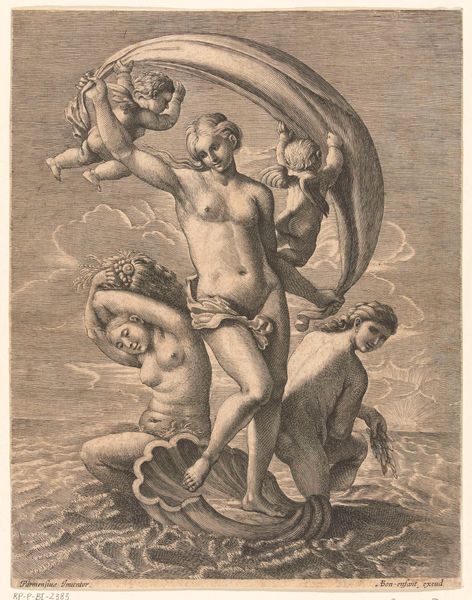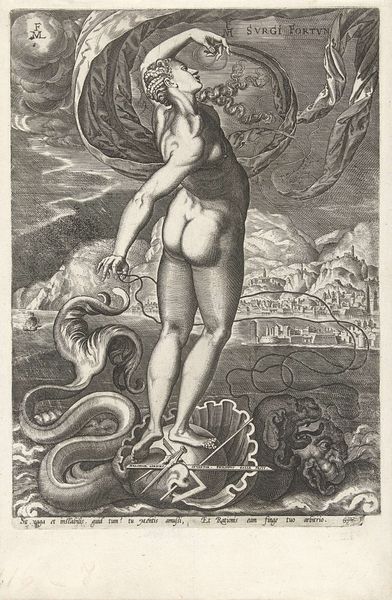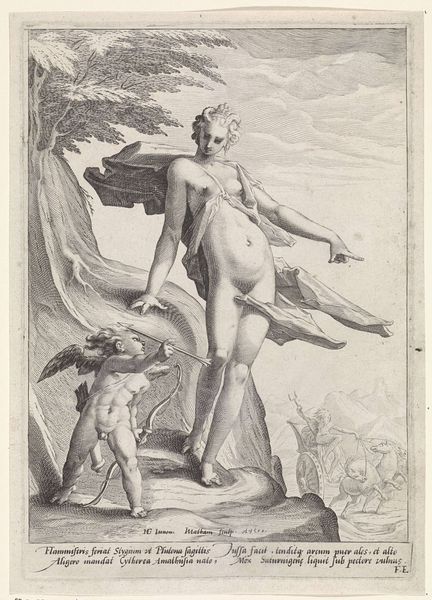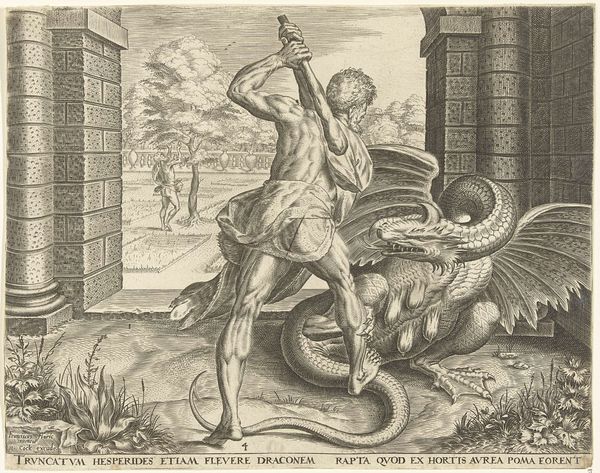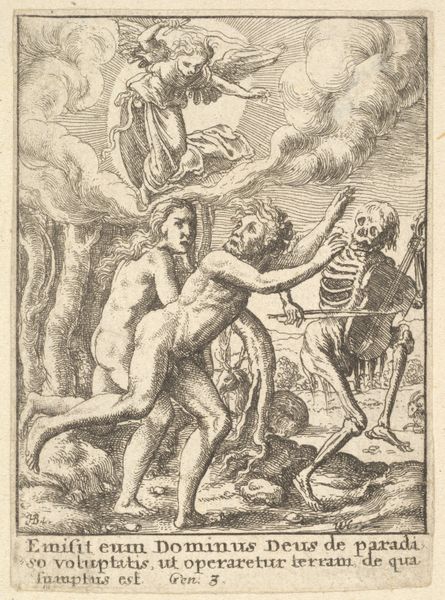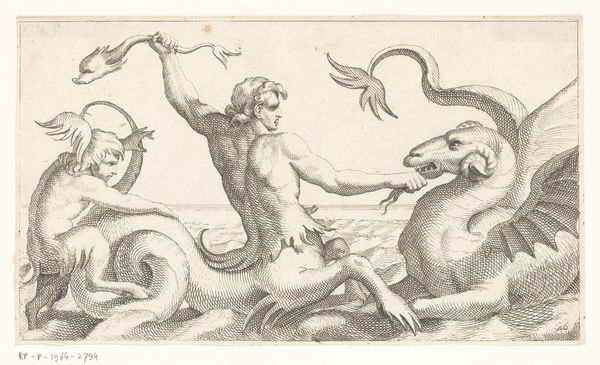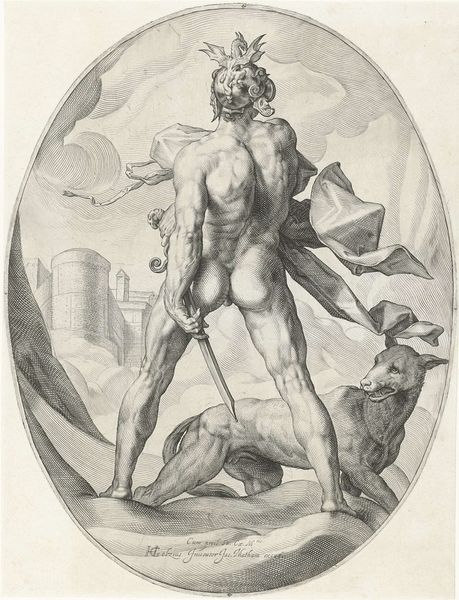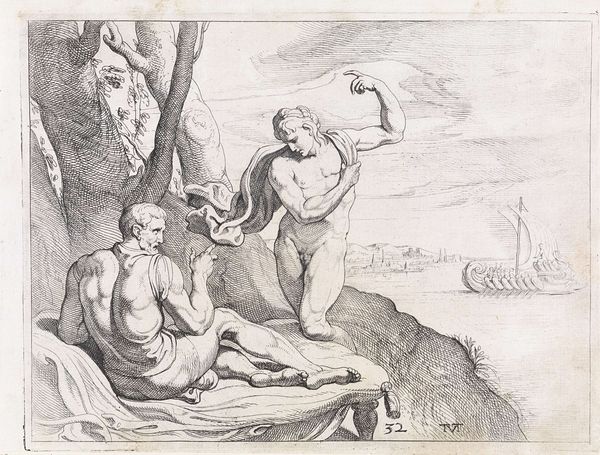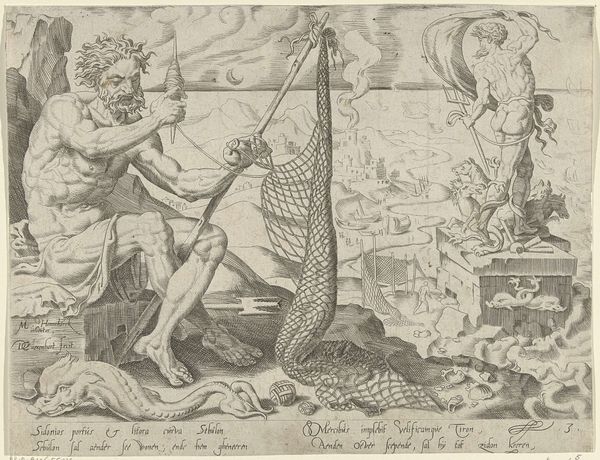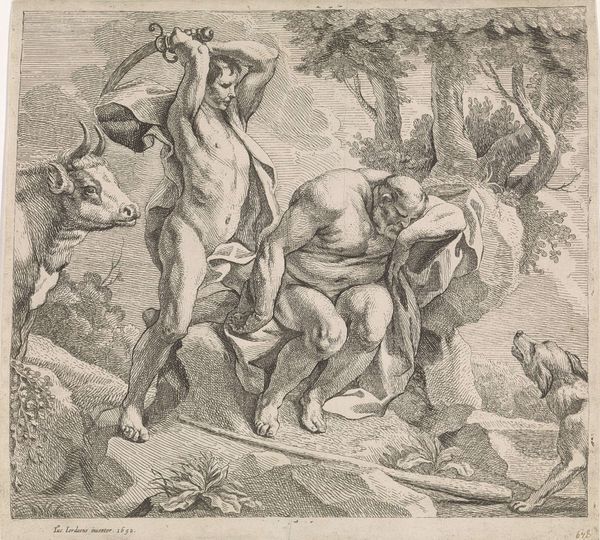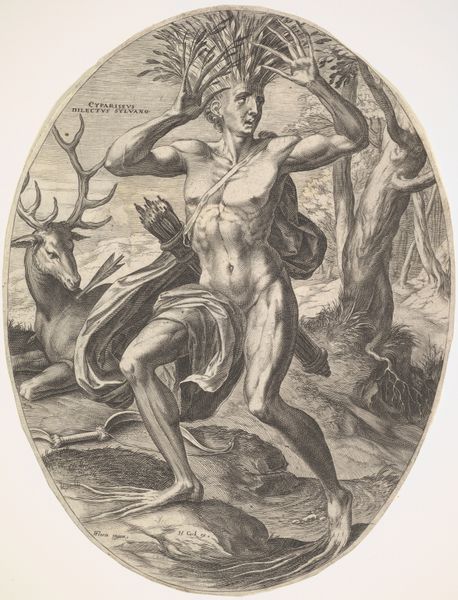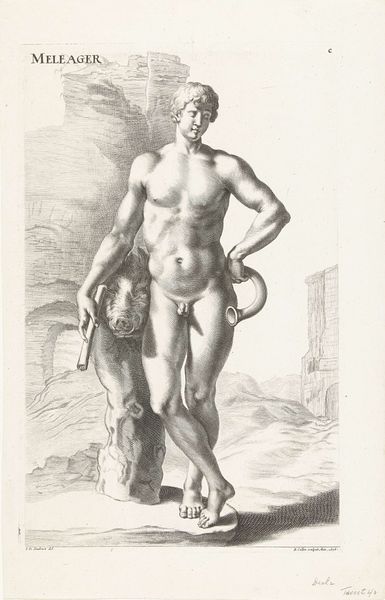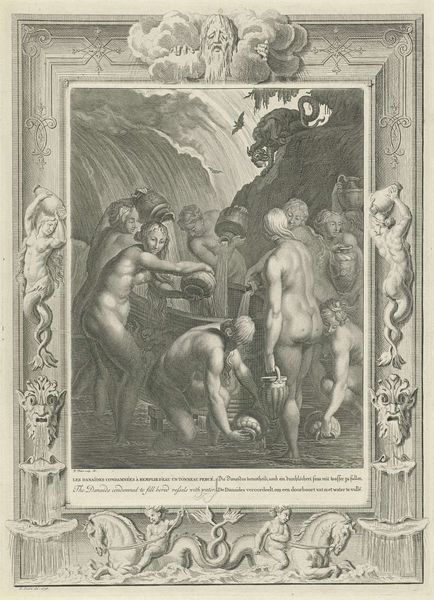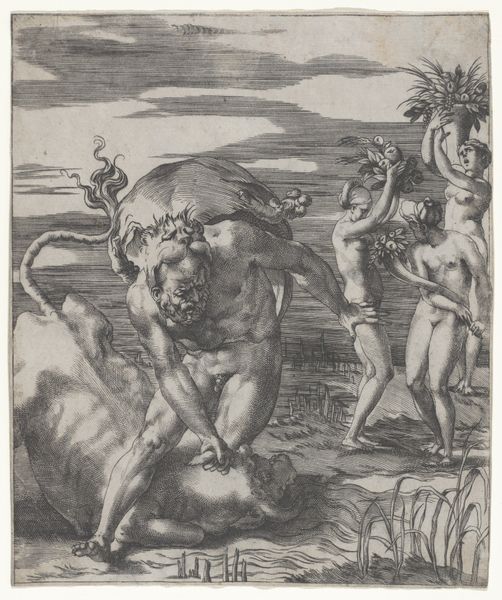
print, engraving
#
portrait
#
baroque
# print
#
landscape
#
figuration
#
pencil drawing
#
portrait drawing
#
engraving
Dimensions: height 294 mm, width 214 mm
Copyright: Rijks Museum: Open Domain
Giovanni Antonio Faldoni created this print, likely in the early 1700s, using the intaglio technique of etching. The image is realized through the controlled corrosion of a metal plate using acid, allowing for precise lines and intricate details. Look closely, and you’ll see a rich, tonal range. The linear quality of etching gives the scene its distinctive graphic style, a departure from the painterly effects achieved through other printmaking methods like mezzotint. Faldoni was a skilled printmaker, and this etching demonstrates the artist's command of line and shading to create depth and form. The etching process also allowed for the relatively quick reproduction of images, serving the growing market for art prints during this period. By examining the materials and making of this etching, we gain insight into its historical context. The print exemplifies the convergence of artistic skill, technological innovation, and commercial enterprise that defined the world of printmaking, and its wider impact on the distribution of images in the early modern era.
Comments
No comments
Be the first to comment and join the conversation on the ultimate creative platform.
